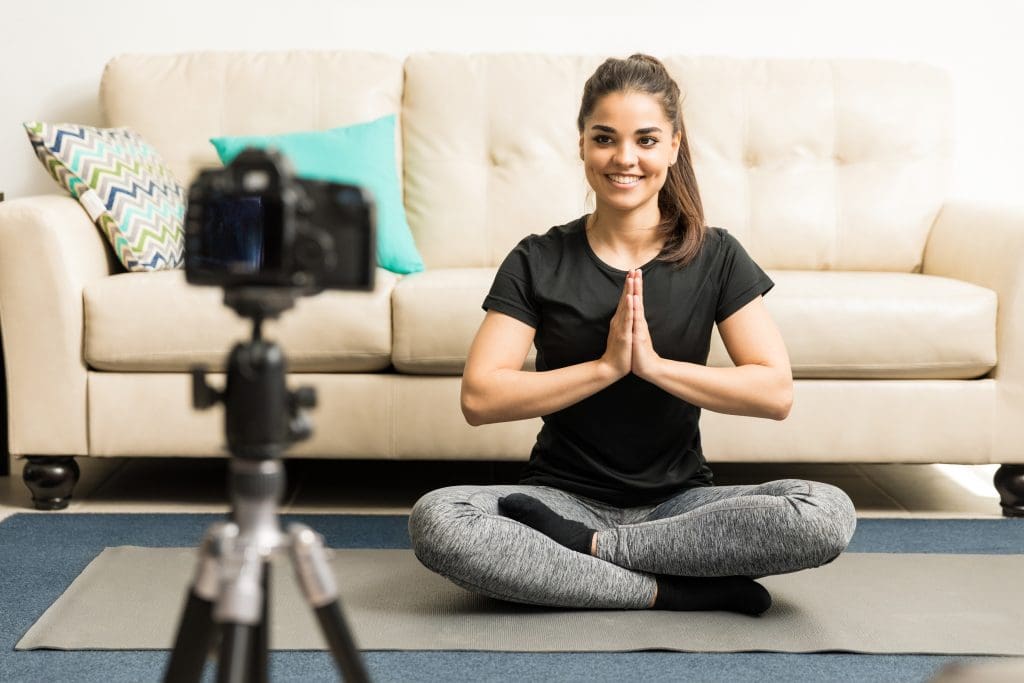Elevating Virtual Fitness: How Functional Gyms are Leveraging Technology to Enhance the Online Workout Experience

Elevating Virtual Fitness: How Functional Gyms are Leveraging Technology to Enhance the Online Workout Experience

Virtual fitness classes have come a long way in recent years. With the advent of new technology and the rise of the internet, functional fitness gyms are now able to offer engaging and interactive online classes that rival the traditional gym experience. In this article, we will examine how functional fitness gyms are leveraging technology to enhance the virtual workout experience, and how you can take advantage of the latest developments to achieve your fitness goals.
Interactive Elements:
One of the biggest challenges that functional fitness gyms have faced with virtual classes is keeping them engaging. After all, it’s one thing to attend a class in person and another to attend one online. But functional fitness gyms have found ways to keep classes exciting by incorporating interactive elements into their classes. For example, some gyms use live chat during classes to allow participants to interact with each other and the instructor. Others use virtual reality to create an immersive experience that feels like you’re actually in the gym. By using interactive elements, functional fitness gyms are able to create an engaging and dynamic workout experience that keeps participants engaged and motivated.
Interactive elements can enhance the virtual workout experience by:
- Increased engagement: Interactive elements such as gamification, leaderboards, and social features can make workouts more engaging and motivate users to participate more actively. For example, a virtual workout platform that incorporates game-like challenges or competitions can encourage users to push themselves harder and keep coming back for more.
- Personalization: Interactive elements can allow users to customize their workouts to their preferences and fitness level. For instance, a virtual personal trainer that adapts to the user’s feedback can provide tailored exercise routines that are more effective and enjoyable.
- Real-time feedback: Interactive elements can provide users with real-time feedback on their performance, helping them to adjust their form and technique for optimal results. This can be particularly useful for exercises that require proper form, such as yoga or weightlifting.
- Variety: Interactive elements can add variety and novelty to workouts, which can help prevent boredom and increase adherence. For example, a virtual workout platform that offers different types of classes, such as dance, yoga, or HIIT, can provide users with a range of options to keep their workouts fresh.
- Community building: Interactive elements can also foster a sense of community among users, which can increase motivation and accountability. For example, a virtual workout platform that includes social features such as chat rooms or live classes can enable users to connect with like-minded individuals and support each other in their fitness journeys.

Staying Connected
Another important aspect of the virtual fitness experience is staying connected to the gym and to other participants. Functional fitness gyms have found ways to do this through social media groups, where participants can share tips, challenges, and motivation with each other. Additionally, functional fitness gyms have begun to use an online class booking system like ClassFit that allow participants to easily schedule and attend classes. By using these tools, functional fitness gyms are able to keep participants connected to the gym.
Its advantages are:
- Increased accountability: It can help users stay committed to their fitness goals. This can be particularly useful for virtual workouts, where it can be easy to lose motivation without the presence of a physical trainer or gym.
- Social support: Staying connected with others can provide social support and motivation, which can help users stay on track and overcome challenges. For example, a virtual workout platform like Zoom that includes social features, such as live classes or chat rooms, can enable users to connect with like-minded individuals and support each other in their fitness journeys.
- Personalization: This can provide users with personalized guidance and support, which can help them achieve their fitness goals more effectively. For instance, a virtual personal trainer that adapts to the user’s feedback can provide tailored exercise routines that are more effective and enjoyable.
- Feedback and support: Staying connected with a virtual trainer or community can provide users with real-time feedback and support, helping them to adjust their form and technique for optimal results. This can be particularly useful for exercises that require proper form, such as yoga or weightlifting.
- Flexibility: Staying connected virtually can provide users with greater flexibility and convenience, enabling them to workout from anywhere at any time. This can be particularly useful for users with busy schedules or those who live in remote areas without access to a physical gym.
Technology for Better Results
Functional fitness gyms are also using technology to help participants achieve better results. For example, some gyms use wearable fitness trackers to monitor participants’ progress and provide personalized feedback. By using technology to provide a more personalized and effective workout experience, functional fitness gyms are able to help participants achieve their fitness goals more quickly and effectively.
Technology can enhance the virtual workout experience in several ways, including:
- Personalization: Technology can provide users with personalized workouts based on their fitness goals, preferences, and fitness level.
- Tracking Progress: It can also help users track their progress over time, providing them with real-time feedback on their performance and helping them stay motivated. This can be particularly useful for exercises that require proper form, such as yoga or weightlifting.
- Interactive Elements: Interactive elements such as gamification, leaderboards, and social features can make workouts more engaging and motivate users to participate more actively. For example, a virtual workout platform that incorporates game-like challenges or competitions can encourage users to push themselves harder and keep coming back for more.
- Real-time Feedback: Technology can provide users with real-time feedback on their performance, helping them to adjust their form and technique for optimal results. This can be particularly useful for exercises that require proper form, such as yoga or weightlifting.

Virtual Personal Training
Another way functional fitness gyms are leveraging technology is by offering virtual personal training. Virtual personal training allows clients to work one-on-one with a certified personal trainer, without ever having to step foot in the gym. This is especially beneficial for clients who live far from the gym or who have mobility issues. Virtual personal training can be done over video conferencing, and by using the free online class booking system, clients can easily schedule and attend sessions with their trainer.
Virtual personal training can enhance the virtual workout experience in several ways, including:
- Personalization: Virtual personal training allows users to receive personalized guidance and support based on their fitness goals, preferences, and fitness level. A virtual personal trainer can provide tailored exercise routines that are more effective and enjoyable, and adjust them based on the user’s progress.
- Accountability: Virtual personal training provides users with accountability, which can help them stay committed to their fitness goals. By scheduling regular sessions with a virtual personal trainer, users are more likely to show up and stay motivated to achieve their fitness goals.
- Flexibility: Virtual personal training provides users with greater flexibility and convenience, enabling them to workout from anywhere at any time. This can be particularly useful for users with busy schedules or those who live in remote areas without access to a physical gym.
- Real-time Feedback: Virtual personal training can provide users with real-time feedback on their performance, helping them to adjust their form and technique for optimal results. This can be particularly useful for exercises that require proper form, such as yoga or weightlifting.
- Expertise: Virtual personal training provides users with access to expert guidance and support, helping them to achieve their fitness goals more effectively. A virtual personal trainer can provide guidance on nutrition, exercise, and lifestyle changes, providing users with a holistic approach to their fitness journey.
Incorporating a free online class booking system can make it easy for participants to schedule and attend classes, which can help to keep them engaged and motivated. It also allows gyms to better manage class sizes and schedules. By providing a more personalized and effective workout experience, functional fitness gyms are helping participants achieve their fitness goals more quickly and effectively. With the use of virtual personal training, remote monitoring, functional fitness gyms are making it more convenient for clients to achieve their fitness goals.
The virtual workout experience has come a long way, and it’s now possible to have an engaging and interactive workout experience from the comfort of your own home. With technology continuing to evolve, the future of virtual fitness looks bright. Functional fitness gyms are leading the way by leveraging technology to enhance the online workout experience. With the use of interactive elements, social media, free online class booking system, virtual personal training, remote monitoring, and online class recording, functional fitness gyms are making it easy for clients to achieve their fitness goals.





